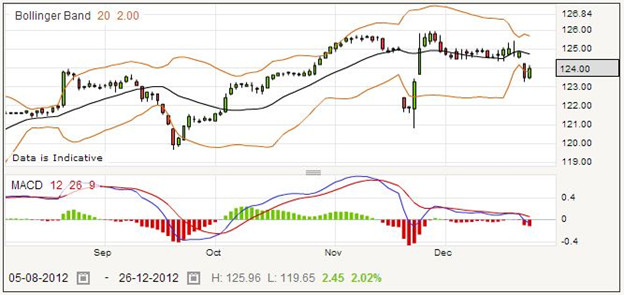HICL is an infrastructure investment company, and claims to have been the first one listed on the London Stock Exchange in 2006 when it went public. The daily price chart below shows good trends for spread betting, but also some breaks which could prove worrisome.

Although the company is known as HICL Infrastructure Company Limited, the initials HICL stand for HSBC Infrastructure Company Limited, meaning there is some tautology in the name. It was established to be a long-term investor in public infrastructure, and as such works with the public sector and is involved with the notorious PFIs, the Private Finance Initiatives, which have attracted some criticism.
The PFI is a combination of private sector investment building the infrastructure for the public sector, in return for an annual payment from the public sector. This has proved popular with successive UK governments partly because it allows necessary cost expenditures to be deferred, making the accounts look better, as cynics would have it.
This formation of company is excellent for investors, who are assured of a long-term government backed return on their money. The only limiting factors are the amount of money available for investment – the market capitalization is well over £1 billion – and the willingness of the government to contract out further projects. There is little risk or exposure overall, as even with cost and price overruns the government will usually fund the projects.
Looking at the price chart, there are a couple of alarming dips, no doubt in response to particular public statements. This is the one disadvantage with this type of company, where a change of government policy can have an instant effect on the share price. If you are concerned about this, you should look into using Guaranteed Stop Losses (GSL’s) on your bets, even though they cost a little more in terms of an increased spread.
HICL Infrastructure Rolling Daily
HICL is a finance business, providing investment for infrastructure development mainly in the UK. As always, you need to look at the technical indicators before deciding on your bet. Assuming you have done so and identified a bearish outlook for this stock, you might decide to place a short spreadbet for £100 per point. The current price for a daily rolling bet is 123.89 – 124.51, and the size of your bet at £100 per point is based on your research which shows the price is not very volatile.
Suppose the price goes down to 119.39 – 120.01. You might decide to close out your trade and collect your winnings. The bet was placed at the selling price of 123.89. You close the bet at the buying price of 120.01. That means you have gained 3.88 points. With your stake of £100 per point, it is easy to see that your bet has won you £388.
Now if the price goes the wrong way for you, you might find that you have to close the bet when the quote is 126.14 – 126.76, simply to avoid the loss growing too large. The initial price for the bet was 123.89, as before. This time the bet was closed at 126.76. Taking 123.89 away from 126.76, you find that you have lost 2.87 points. With your £100 stake, this amounts to a loss of £287.
Many spread traders decide to use a stop loss order to ensure that a losing bet is closed quickly, even if they are not watching the account. In this case, a stoploss order might have closed your bet at 125.24 – 125.86. With a closing price of 125.86, and the opening price of 123.89, this time you would have lost 1.97 points. For your wager of £100 per point, that would amount to £197 that you have lost.
HICL Infrastructure Futures Style Bet
When you take out a futures style bet, it is usually because you anticipate holding the bet open for some weeks or months before you see the gain that you are expecting. Even so, you can close the bet at any time if you want to cut your losses on a losing trade, or if you decide to take your profits. The current quote for the far quarter is 124.34 – 125.84, so you might choose to place a long bet for £35 per point, banking on an overall bullish market.
For this example, assume that the price goes up to 131.09 – 132.59, and you close the bet for a win. The opening price was the buying price of 125.84, and your bet was closed at the selling price of 131.09. That means you have gained 131.09 minus 125.84 points, and this works out to 5.25 points. With a stake of £35 per point, your profit would be £183.75.
Taking the other case, that of a losing bet, perhaps the price would fall to 122.09 – 123.59 before you decide to cut your losses and close the bet. Your starting price as before was 125.84, but this time you close the bet at 122.09, losing the difference which is 3.75 points. Multiplying this by your stake of £35, your total losses would be £131.25.
If you have better things to do than watch the market all day long, then you should consider placing a stop loss order when you take out your bet, requiring your spread betting provider to close a losing bet for you before it gets too large. With a stop loss order, this bet might have closed at 122.99 – 124.49, making the closing price 122.99. The opening price was 125.84, so taking away the closing price of 122.89 this time you would have lost 2.85 points. For your chosen size of bet, this amounts to £99.75.